
Frederick County, Maryland is situated approximately 45 miles from the city of Baltimore.
As the largest geographic county in the state, Frederick County hosts a high concentration of highly educated workers who serve a thriving bioscience industry.
With a total population of more than 270,000 people, Frederick County is a diverse community with over 20% of residents reporting that they speak a language other than English.
%
Non-English Speakers
The Citizen Engagement Challenge
Building community connections with a diverse rural population
Like many other counties across the U.S., Frederick County is faced with a diverse set of community engagement challenges.
Serving a primarily rural population requires an approach to engagement that relies heavily on building solid community relationships and connections.
To do this, Frederick County staff identified the need for a mixed-mode approach that also incorporated the specific language accessibility needs of the community.

Equitable Community Engagement Powered by PublicInput
Knowing that there is no “one-size-fits-all” approach to achieving equity, county staff used a variety of tactics and initiatives to reach and engage the diverse population.
Ongoing Spanish Speaking Community Survey
Frederick County used PublicInput to address the language accessibility needs of its Spanish speaking residents in a public opinion survey.
The purpose of this survey was to perform an ongoing evaluation of the Hispanic community’s awareness of county programs and services, as well as to learn more about the barriers they face in accessing these resources.

Above Screenshot:
Frederick County Spanish Speaking Participant Map by Zip Code
Language Access for Public Meetings
Using the PublicInput automated multilingual translation features, Frederick County now offers public meeting translation and interpretation in over 100 languages.
“We are stronger when everyone has a voice in how our county operates,” -Frederick County Executive Jan Gardner, 2022
The PublicInput platform allows residents and stakeholders to automatically translate the entire project page with just two clicks.
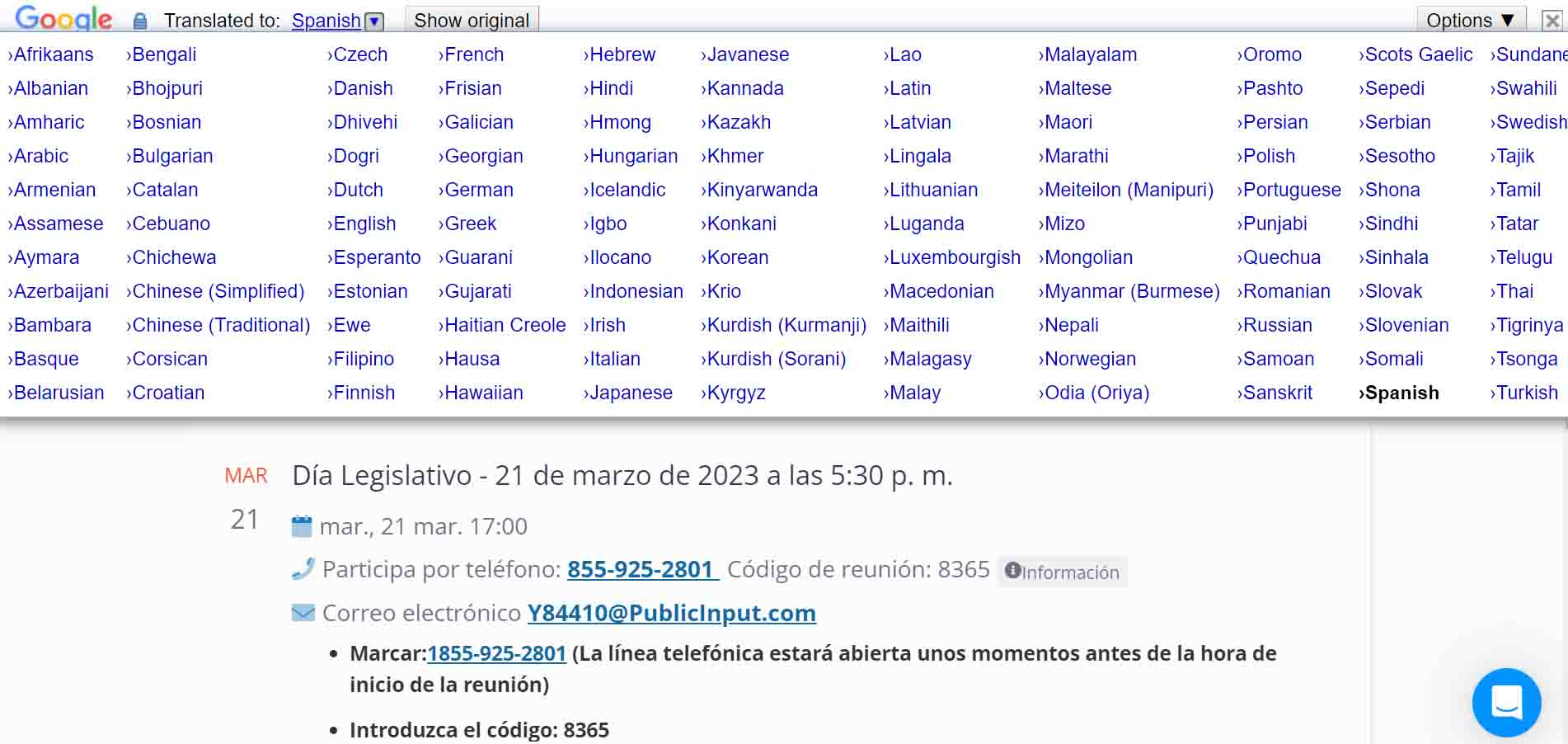
Above Screenshot:
Resident facing screenshot of public meeting project page translated from English to Spanish
Live multilingual translation allows residents and stakeholders to choose the language for live translated close captioning during public meetings.
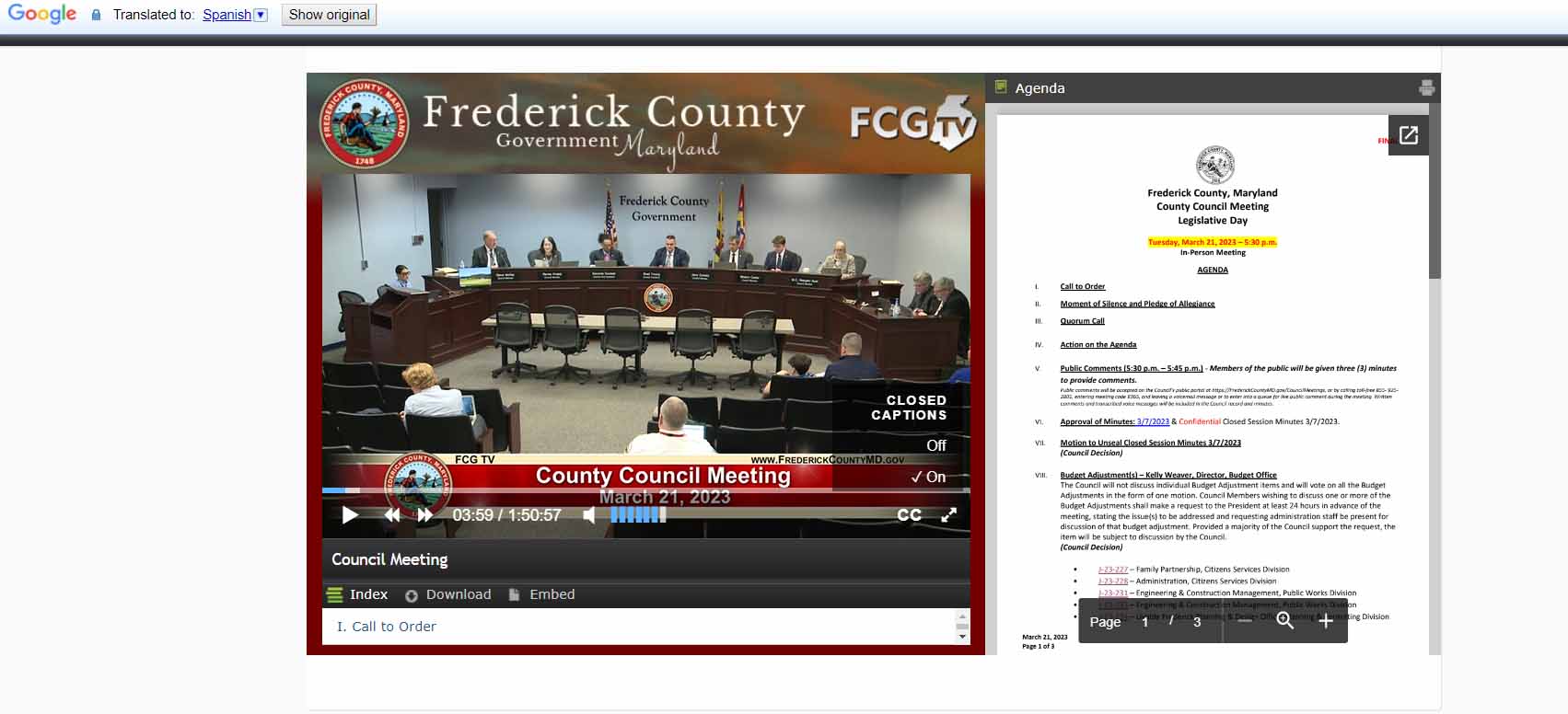
Above Screenshot:
Frederick County council meeting with closed captioning
Automated PublicInput meeting transcripts helped staff capture meeting minutes for every public meeting with an option to translate and share in over 100 languages.
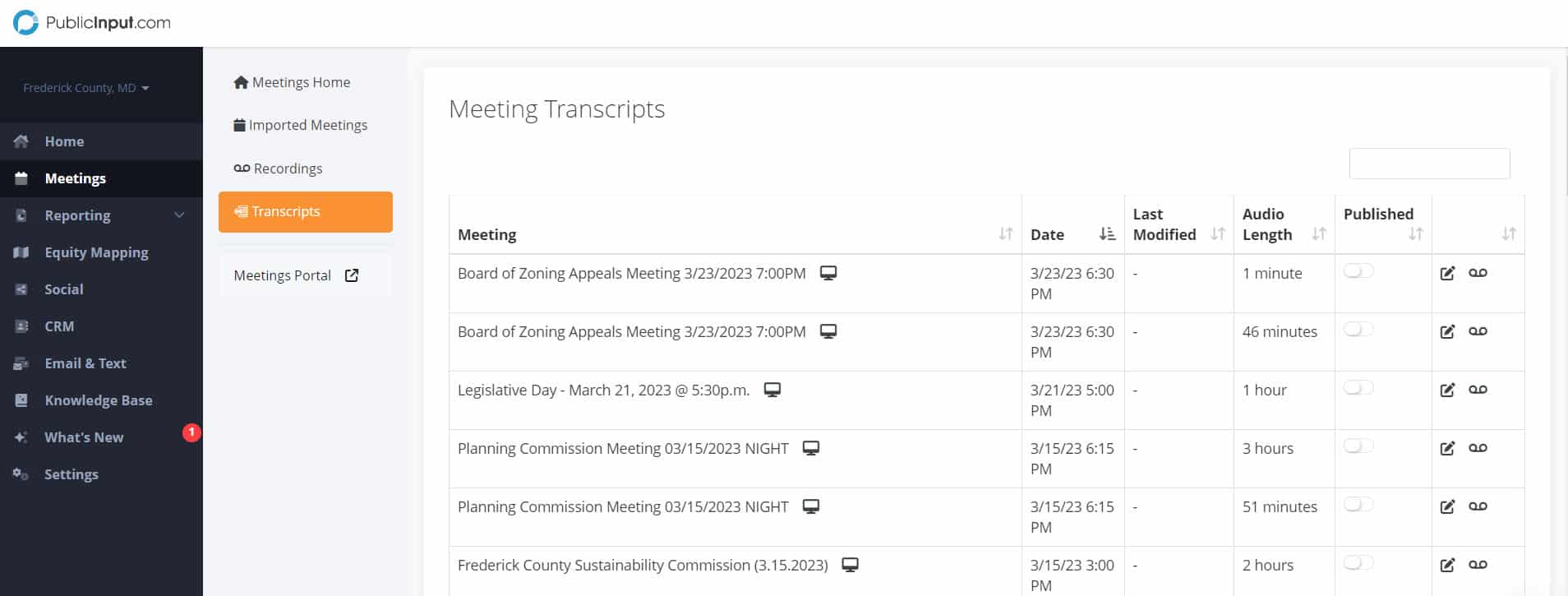
Above Screenshot:
Admin view of the automated public meeting transcripts
American Rescue Plan Act (ARPA) Planning
County staff used the PublicInput platform to facilitate a community investment discussion around American Rescue Plan Act (ARPA) funding. To develop a plan on how best to invest these federal funds, County staff worked with the community to determine the top priority areas.

Above Screenshot:
Real time PublicInput dynamic report highlight engagement data
Gathering feedback on strategic priorities
When newly elected County Executive Jessica Fitzwater took office, she made inclusion, sustainability and accountability key values of her administration. As part of implementing these values, county staff worked together with community members to establish priorities that fulfilled their vision of a livable and vibrant community.
To do this, county staff facilitated planning workgroups and an associated prioritization survey focusing on seven key priorities ranging from economic development and jobs to government innovation.
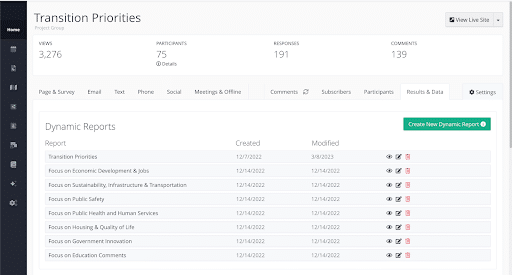
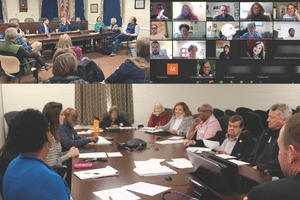
Above Screenshot:
PublicInput reporting and segmentation tools drill down into comment themes and summarize feedback.
Public Input on Budget Priorities
County staff engaged residents in the budget prioritization and planning process, focusing first on understanding resident views and community priorities.
Using the PublicInput platform, county staff created the Frederick County Budgeting home, a micro-site for residents to learn about the budgeting process and provide feedback on specific topics. Using a mixed-mode approach, residents were able to provide feedback on their own schedule via email, online, phone, or in-person formats.
In addition to the digital engagement, the county hosted public hearings and town hall meetings to collect input from residents who preferred to engage in-person.
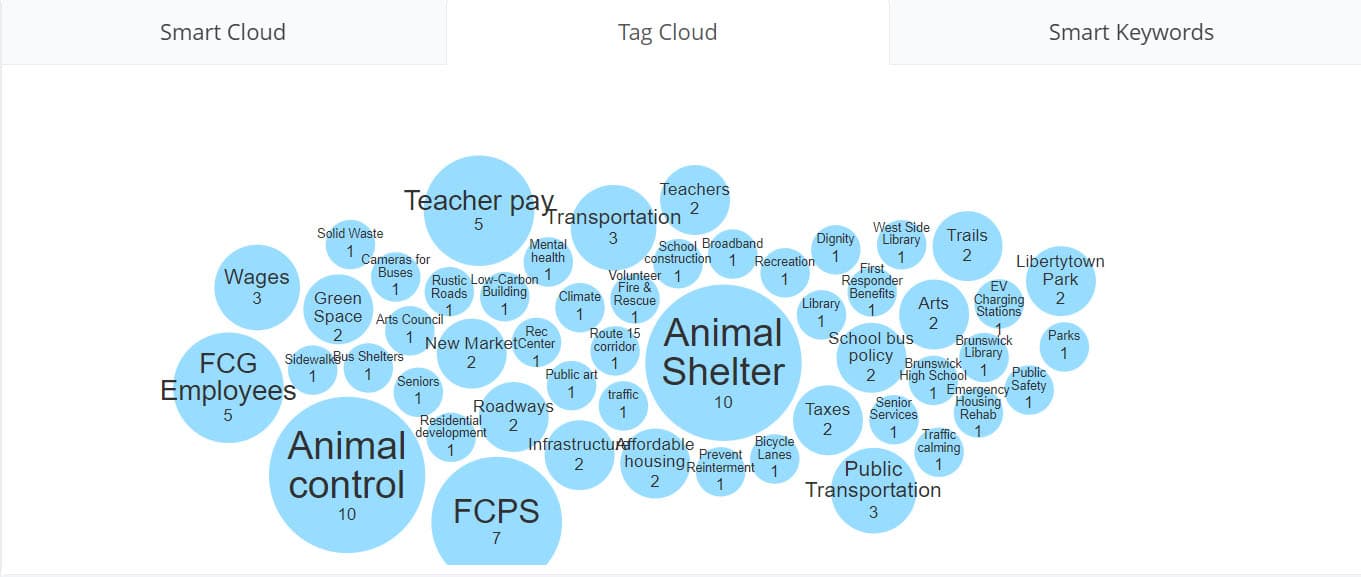
Above Screenshot:
PublicInput comment tagging word cloud automatically codes narrative comments into themes.
The Outcome
Using the PublicInput platform, the Frederick County team was able to use a mixed-mode approach to community engagement that took into account the specific needs and preferences of their residents and stakeholders. Project benefits include the ability for county staff to:
-
- Offer translatable closed captioning during live public meetings.
- Increase outreach and engagement within the Frederick County Spanish-speaking community.
- Collaborate with the community to set county-wide priorities.
- Inform and engage the community with the annual budget planning process.
- Offer a mixed-mode engagement approach that provides options like Email and in-person formats to gather high quality input.
- Easily monitor and report on engagement in one centralized platform.
- Confidently recommend investments and priorities based on documented public input.
Want to learn more about the PublicInput community engagement features? Book a tour today!



